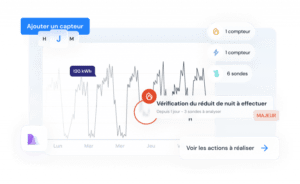Everything you need to know about the European Green Taxonomy


To achieve carbon neutrality by 2050, the European Commission launched the Green Taxonomy at the beginning of 2022. The primary goal is to direct corporate investments towards more sustainable activities and contribute to the environmental transition by categorizing activities based on their environmental impact. In the short term, alignment with this taxonomy could also serve as a benchmark for conditioning the aid provided under the European recovery plan.
Let’s take a look at its objective and impact.
What is the European Taxonomy?
The “taxonomy” or “European Green Taxonomy” is an EU regulation that came into effect on January 1, 2023. It establishes a classification system for economic activities to identify businesses that have a positive environmental impact.
The taxonomy is supported by other regulations regarding the disclosure of information by companies, particularly the CSRD (Corporate Sustainability Reporting Directive), which replaces the NFRD (Non-Financial Reporting Directive). The CSRD aims to strengthen and harmonize the obligations of companies in the European Union to disclose social and environmental information through sustainability reporting within financial statements. Since January 1, 2024, the financial reporting obligation has been extended to 50,000 companies (compared to 10,000 in 2022).
Who is affected by the European Taxonomy?
The taxonomy impacts several stakeholders:
- Businesses across all sectors: Companies will need to report the proportion of their revenue, investments, and expenditures that correspond to sustainable activities. Companies with more than 500 employees are already required to disclose their environmental performance (non-financial reporting).
- Member States: These are responsible for implementing public measures, standards, or labels for green financial products or green bonds.
- Financial actors: This includes financial institutions, supervisory bodies (such as central banks), and insurance companies.
Note: The European Green Taxonomy is constantly evolving, and other businesses may be affected as new regulations and eligibility criteria are introduced. Any activity with emissions lower than 100g of CO2 per kWh is included in the green taxonomy (this threshold is redefined every three years based on technological and climate developments).
Some Exceptions
An economic activity that exceeds the threshold for emissions can still be included in the taxonomy if it replaces another activity with a higher carbon footprint. Two types of activities are concerned:
- Transitional activities: These are activities for which no low-carbon alternative exists but that are still part of a decarbonization trajectory.
- Enabling or facilitating activities: These are activities that are not compatible with climate neutrality but are necessary for the ecological transition (e.g., sectors that provide components required for renewable energy technologies).
Identification of Eligible Activities
To be considered sustainable, an activity must contribute in part to one or more of the following six objectives:
- Mitigation of climate change
- Adaptation to climate change
- Sustainable use and protection of aquatic and marine resources
- Transition to a circular economy
- Pollution control
- Protection and restoration of biodiversity and ecosystems
Substantial Contribution
Each objective is defined with specific criteria that determine whether an economic activity is “green” or not. Activities that meet these criteria are considered compatible with the European Green Taxonomy and are eligible for support measures and investments.
DNSH (Do-No-Significant-Harm)
An activity that contributes to one of the aforementioned objectives must not cause significant harm to the others on the list. This is the principle of DNSH (Do No Significant Harm).
Respect of Minimum Safeguards
The activity must comply with minimum standards related to social and governance criteria (Human Rights, International Labour Organization conventions, etc.).
KPIs
Entities subject to the taxonomy must disclose the proportion of their revenue, investments, and expenditures that correspond to sustainable activities.
How does an energy monitoring platform complement the European Taxonomy approach?
With an energy monitoring software like Savee by Advizeo, you contribute to both the mitigation and adaptation to climate change. Thanks to the data collected on the platform, you can analyze it and implement action plans for the most energy-consuming sites to reduce the energy consumption of your buildings.
Our Energy Managers can also provide expert advice and carry out your energy audits to help you optimize your energy use further.

The European Green Taxonomy is a powerful tool for promoting sustainability and the transition to a green economy. By defining clear criteria to classify economic activities based on their environmental impact, it facilitates informed decision-making for investors and businesses. However, further development of the current state of the taxonomy can be expected in the coming months.

